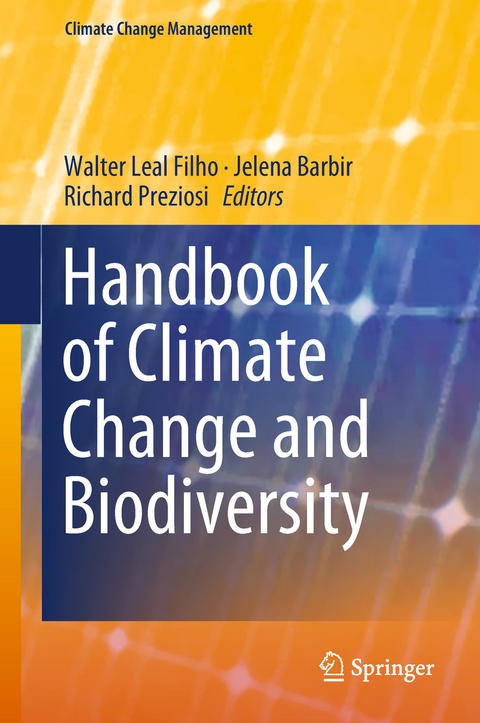
Handbook of Climate Change and Biodiversity
Springer International Publishing (Verlag)
978-3-319-98680-7 (ISBN)
This book was written to address this need. The respective papers explore matters related to the use of an ecosystem-based approach to increase local adaptation capacity, consider the significance of a protected areas network in preserving biodiversity in a changing northern European climate, and assess the impacts of climate change on specific species, including wild terrestrial animals. The book also presents a variety of case studies such as the Yellowstone to Yukon Conservation Initiative, the effects of climate change on the biodiversity of Aleppo pine forest in Senalba (Algeria), climate change and biodiversity response in the Niger Delta region, and the effects of forest fires on the biodiversity and the soil characteristics of tropical peatlands in Indonesia.
This is a truly interdisciplinary publication, and will benefit all scholars, social movements, practitioners and members of governmental agencies engaged in research and/or executing projects on climate change and biodiversity around the world.Water Management and Climate Change in the Focus of International Master Programs in Latin America and the Caribbean.- Mangrove Conservation Policies in the Gulf of Guayaquil.- Biodiversity Issues Should be Better Taken into Account in the Energy Transition.- Approaches to Ecosystem Services and Biodiversity Assessment in Belarus.- Community Action for Biodiversity and Forest Conservation and Adaptation to Climate Change in the Wild Coffee Forests (CAFA).- Impact of Climate Change on Sawfly (Suborder: Symphyta) Polinators in Andalusia Region, Spain.- Coffee, Climate and Biodiversity: Understanding the Carbon Stocks of the Shade Coffee Production System of India.- Implications for Biodiversity of Potentially Committed Global Climate Change (from Science and Policy).- Ensuring Co-Benefits for Biodiversity, Climate Change and Sustainable Development.- Sustainable Hydropower: using Ecosystem-based Adaptation to increase local Adaptation Capacity in Brazil.- The Yellowstone to Yukon Conservation Initiative as an Adaptive Response to Climate Change.- Saving the Last Endemic-Church Forests in Ethiopia: The Case of Lake Tana Biosphere Reserve.- Factors Affecting Communication and Information Sharing for Water Resource Management in Lake Victoria Basin (LVB).- Climate Sentinels Research Program: Developing Indicators of the Effects of Climate Change on Biodiversity in the Region of New Aquitaine (South West, France).- Introducing Spatio-Temporal Conservation Units: Models for Flexible Optimization of Species Persistence under Climate Change.- The Impact of Climate Change and Variability on Wild Terrestrial Animals in Selected Rural Coastal Regions of Kenya.- Biodiversity Risks for Belarus Connected with the UV Climate Change.- The Impact of Forest Fire on the Biodiversity and the Soil Charactersitics of Tropical Peatland.- Promoting Climate Agenda and Biodiversity Conservation at the Local Level: A Case for Nepal's Rural and Urban Municipalities.
| Erscheinungsdatum | 07.09.2018 |
|---|---|
| Reihe/Serie | Climate Change Management |
| Zusatzinfo | IX, 408 p. 66 illus., 50 illus. in color. |
| Verlagsort | Cham |
| Sprache | englisch |
| Maße | 155 x 235 mm |
| Gewicht | 789 g |
| Themenwelt | Naturwissenschaften ► Biologie ► Ökologie / Naturschutz |
| Naturwissenschaften ► Geowissenschaften ► Meteorologie / Klimatologie | |
| Schlagworte | biodiversity • Biodiversity conservation • Case Studies • climate change • climate change adaptation • Climate Change Management • Research |
| ISBN-10 | 3-319-98680-5 / 3319986805 |
| ISBN-13 | 978-3-319-98680-7 / 9783319986807 |
| Zustand | Neuware |
| Haben Sie eine Frage zum Produkt? |
aus dem Bereich


